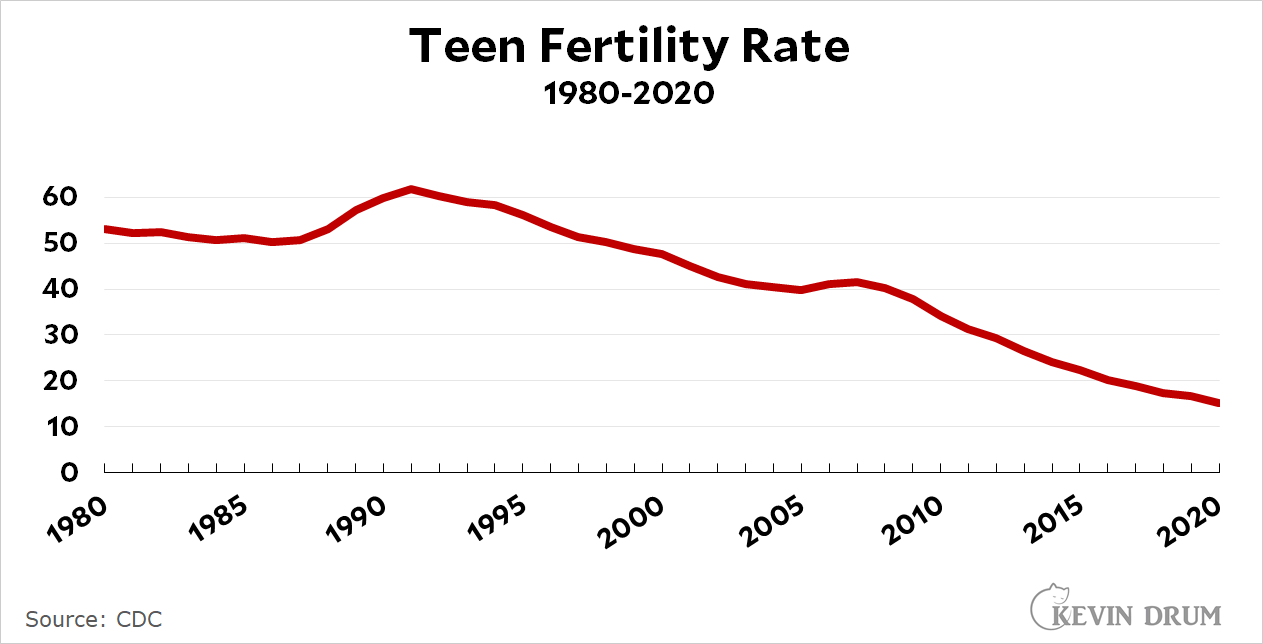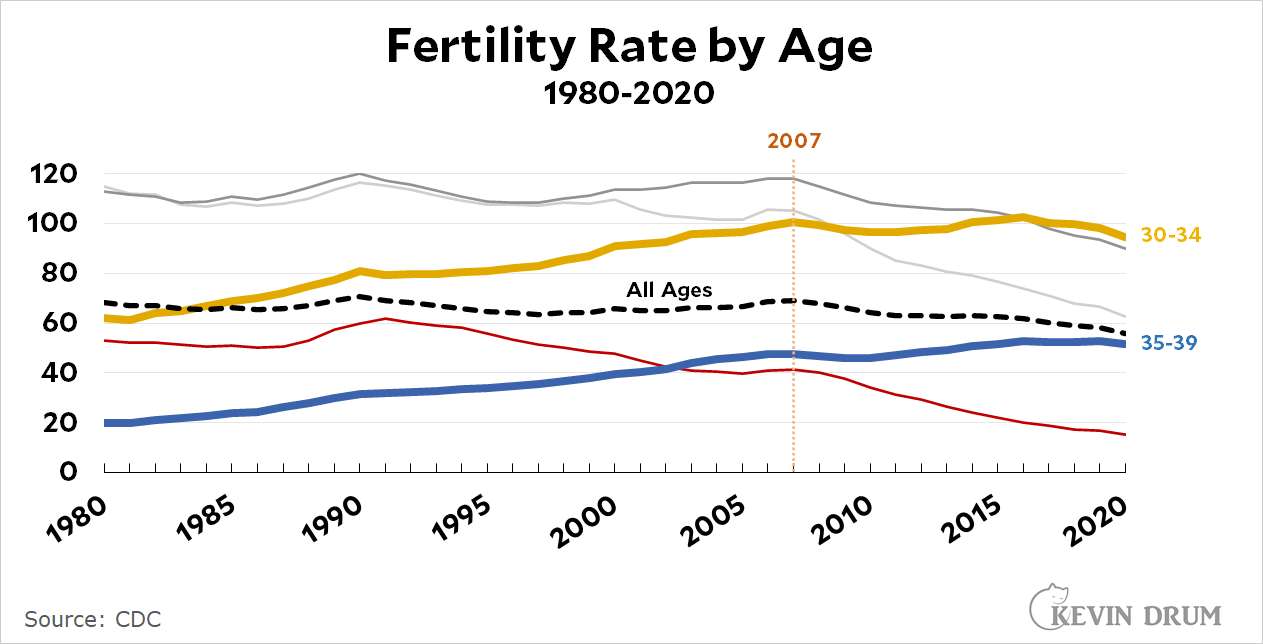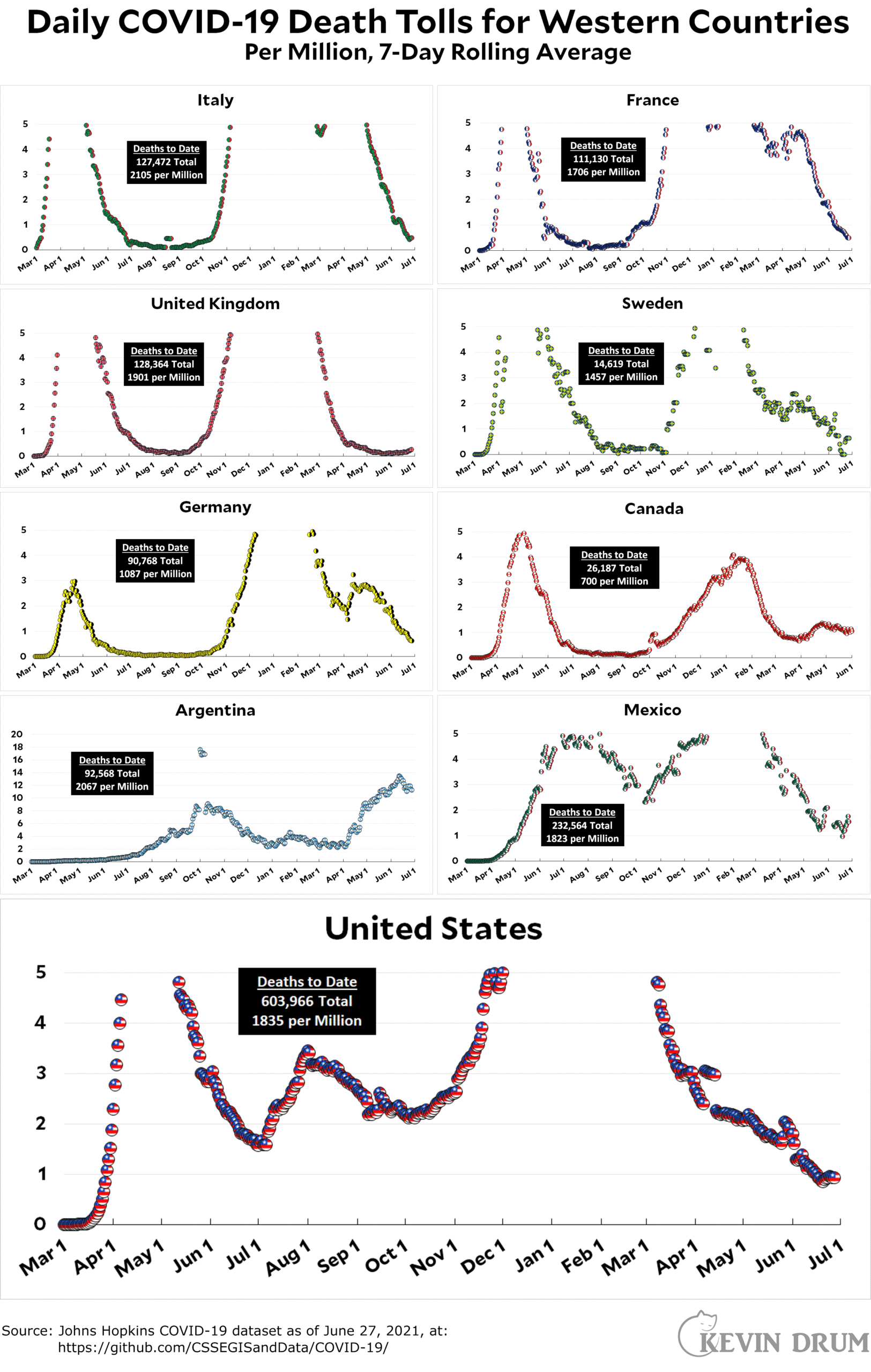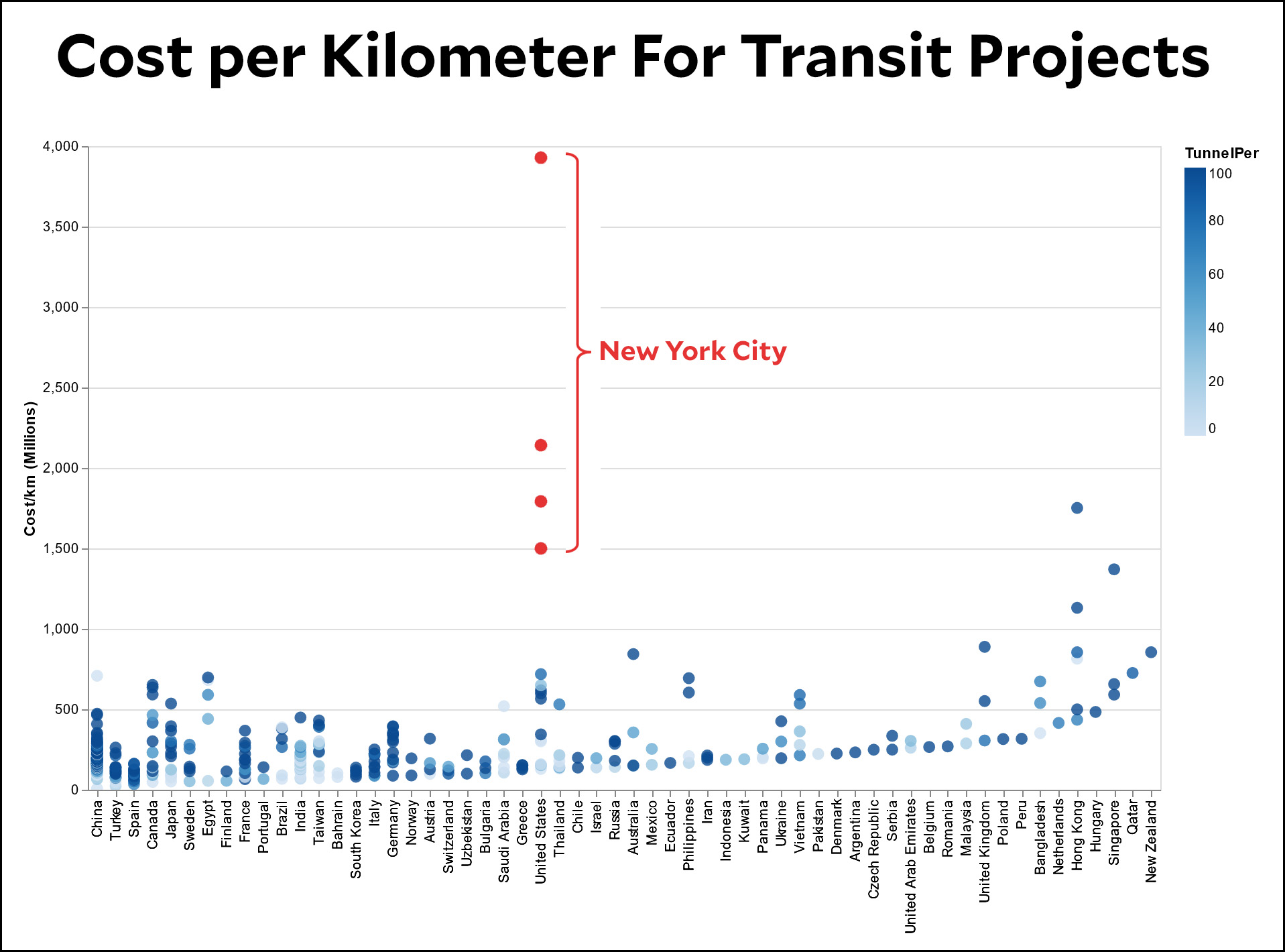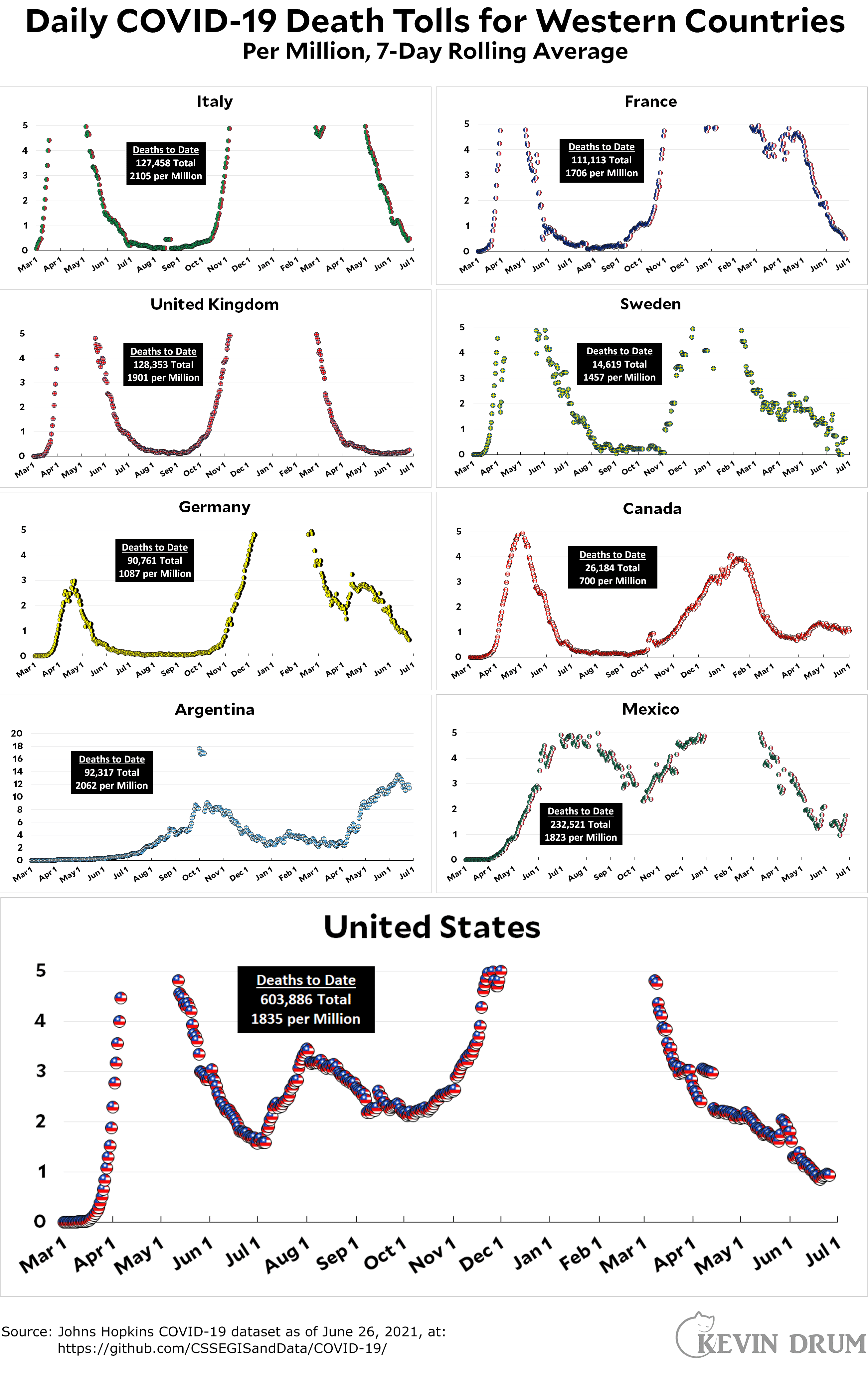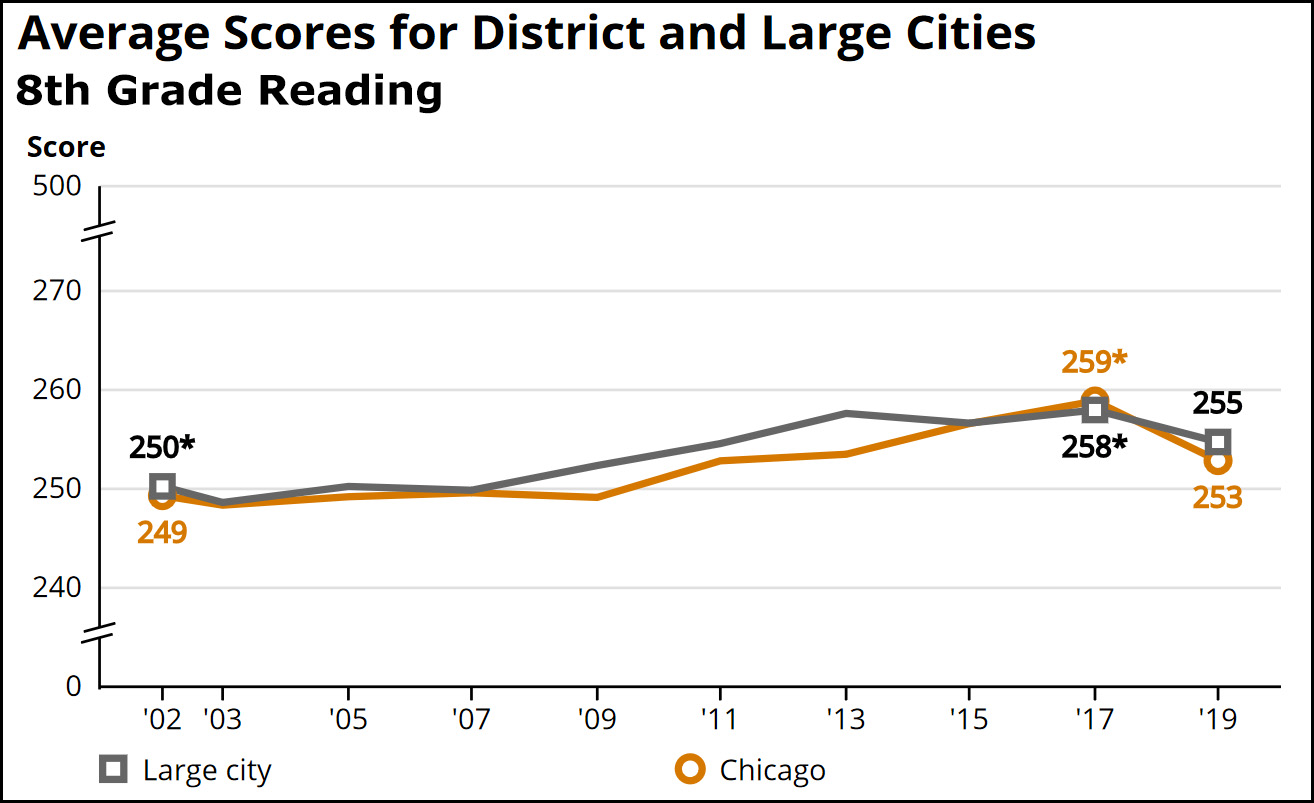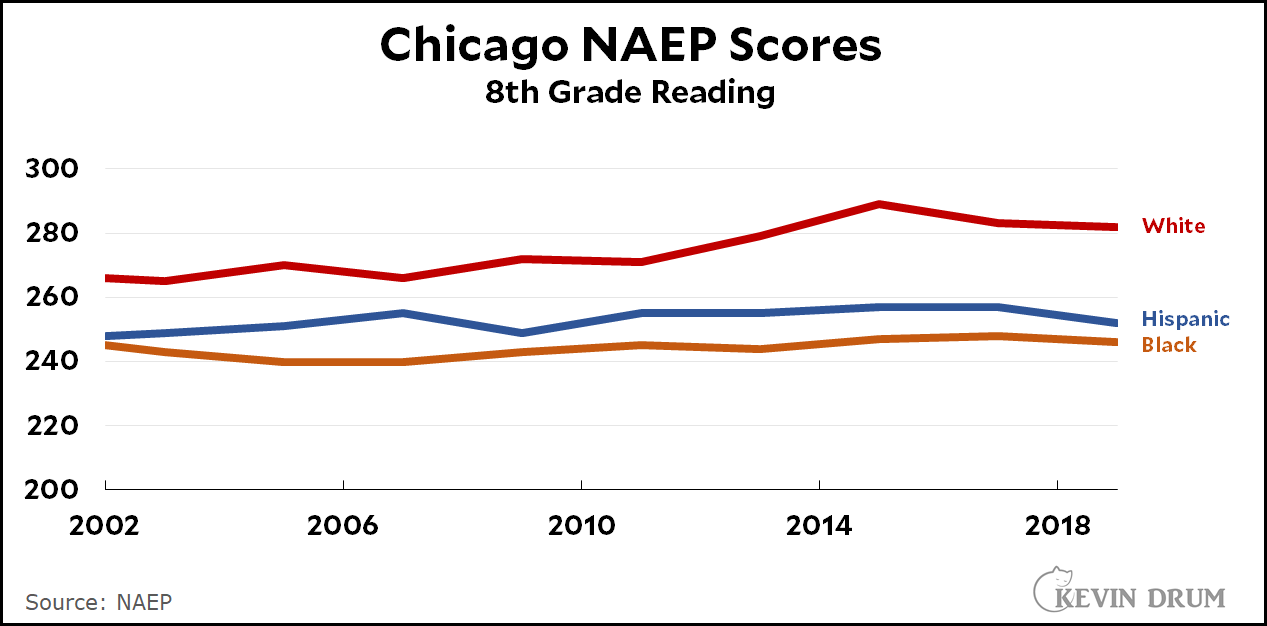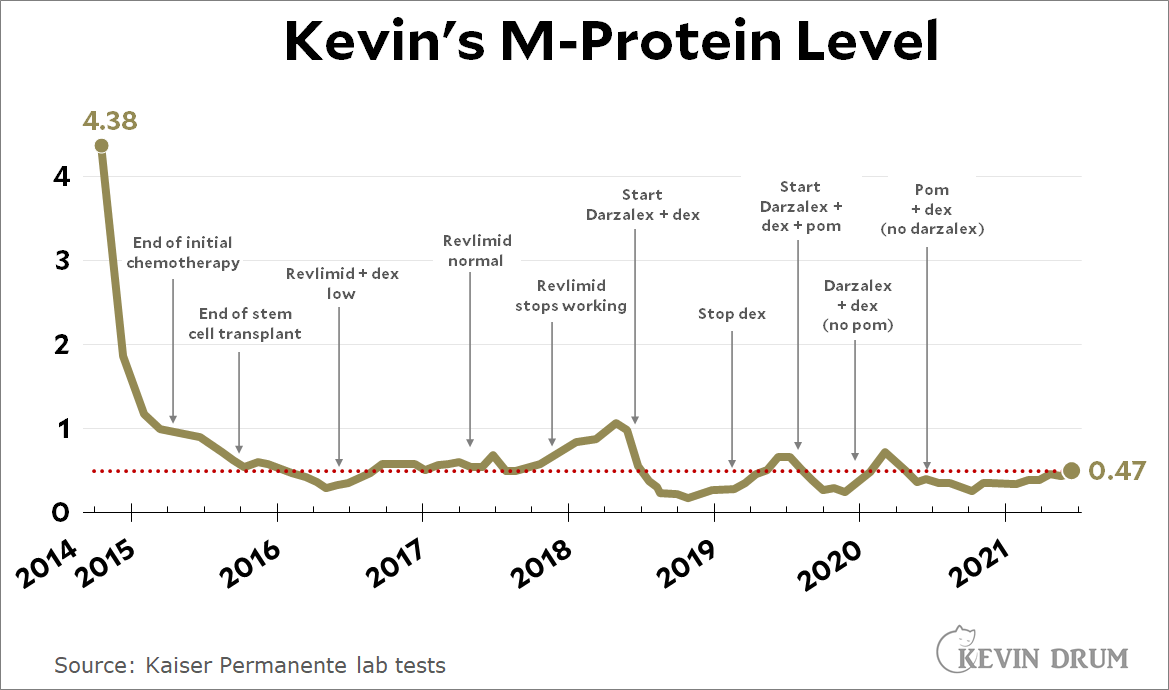A couple of years ago California passed a law that allowed college athletes to make money from licensing their name, image, or likeness (NIL). At first the NCAA huffed and puffed and threatened that if California went through with this it might ban them from playing football, but no one took that seriously. Nor was it ever plausible that universities in other states would allow California schools such a huge recruiting edge without demanding the same advantage for themselves.
For months the NCAA pretended that it might be able to square this circle somehow, but last week's Supreme Court decision in NCAA v. Alston put paid to that, and today they officially caved in completely:
The NCAA Division I Council — reeling from a Supreme Court ruling last week that further stripped away confidence in the ability of the NCAA rule book to withstand antitrust scrutiny — voted to recommend its board of directors “adopt an interim policy that would suspend amateurism rules related to name, image and likeness,” according to a NCAA statement. The board is scheduled to meet Wednesday and expected to approve this measure.
So that's that. But as much as it seems fair to allow athletes to profit from a system that already profits everyone except them, it's hard to see how big-time college sports (i.e., men's football and basketball) survives this.
The problem is that this is certain to blow up inequality in NCAA sports to unsustainable levels. Take my local powerhouse, USC. They've been planning for this day and are certain to adopt a very athlete-friendly NIL policy. For the top recruits, this can mean hundreds of thousands or even millions of dollars, and football factories like USC can make an easy case that stars on their team will cash in at far higher levels than run-of-the-mill big-conference teams. The biggest programs will have on-campus offices that help athletes find agents and get the best deals. They'll remind recruits that their teams get cherry TV exposure. USC in particular will argue that there's no better place for NIL riches than Los Angeles. By the time this gold rush plays out, there will be maybe a dozen top teams that are so far ahead of everyone else that they're going to have to create a new conference just for them.
Make no mistake: there's not much difference between colleges competing for recruits on NIL revenue and colleges competing on just plain paying their athletes. And once you do that, only the very richest places can survive. Welcome to capitalism.
I don't really know what the answer is to this. I suspect there isn't one. Continuing the strict amateurism policy just wasn't in the cards. Eventually it would fall. But I always figured that once it did, there was no longer any way to keep college teams on even a notional level playing field. If a dozen universities basically run pro programs that are farm teams for the NFL while the rest are essentially relegated to Division II, that's the end of big-time college athletics.
Maybe I'm off base about how this plays out. You never know what kind of weird stuff can turn up. But this is how I see it.
POSTSCRIPT: I've used football throughout as my example, but I suspect much the same would happen to men's basketball. And since those two sports fund everything else, if their revenue dries up then so does every other sport. The dozen or so big schools will be fine, but everyone else will see their athletic budgets crater.

